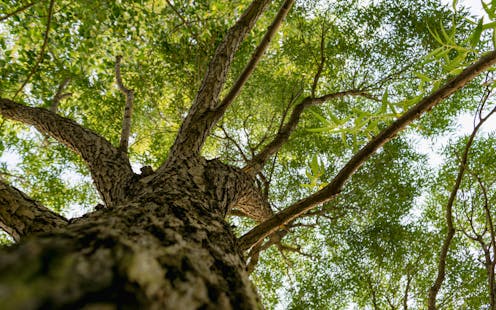Without urgent action, these are the street trees unlikely to survive climate change
- Written by Renée M. Prokopavicius, Postdoctoral Researcher in Plant Ecophysiology, Western Sydney University

Cities across the world are on the front line of climate change, and calls are growing for more urban cooling. Many governments are spending big on new trees in public places – but which species are most likely to thrive in a warmer world?
Numerical targets such as “one million trees” dominate tree-planting programs in cities such as Los Angeles, New York, Shanghai, Melbourne and Sydney. But whacking a million trees into the ground won’t necessarily mean greener suburbs in decades to come.
Often, not enough attention is paid to selecting the right trees or providing enough water so they survive a hotter, drier climate in future.
In our recent research, we assessed the effects of extreme heat and drought on urban tree species. Some much-loved tree species, widely planted across our cities, did not handle the conditions well. It shows how important decisions must be made today for urban greening programs to succeed in a warmer world.
A hothouse experiment
In January 2020, following several years of drought, Penrith in Western Sydney hit 48.9℃ – the hottest temperature ever recorded in Greater Sydney. Researchers later assessed about 5,500 street trees and found more than 10% displayed canopy damage. Exotic deciduous species fared the worst.
The event showed how simultaneous intense heat and drought can damage urban trees.
Trees cool down in hot temperatures by losing water through microscopic openings in their leaves called stomata. Sufficiently watered trees can often tolerate extreme hot temperatures, while drought-stressed trees may struggle to survive.
Our research involved stress-testing 20 broadleaf evergreen tree species from habitats ranging from tropical rainforests to semi-arid woodlands.
Seedlings were grown in a coordinated glasshouse experiment. After the plants were established and acclimatised, half of them – five plants per species – were exposed to a gradual, five-week drought.
In the final week of water deficit, all plants were exposed to conditions simulating a six-day heatwave.
What we found
The 20 plant species varied widely in their ability to handle these conditions.
Of the plants exposed to both heat and drought, two species suffered modest crown dieback (a decline in health of the canopy) and another four species suffered extensive crown dieback.
Most plants resumed growth after the heatwave but several individual plants died: two swamp banksia (Banksia robur) and one crimson bottlebrush (Callistemon citrinus).
Species with dense wood and small, thick, dense leaves use water efficiently and are drought-tolerant. The species which fared best in our study included orange jasmine (Murraya paniculata), inland rosewood (Alectryon oleifolius) and Australian teak (Flindersia australis).
Even when plant species had access to water, their tolerance of heat stress varied widely. Swamp banksia (Banksia robur) and powderpuff lilly pilly (Syzygium wilsonii) suffered extensive crown dieback even with access to water. This shows warmer heatwaves may threaten urban trees in both wet and dry years.
While some species may fare well in heat and drought, they may not necessarily be the best choice for cooling our cities. Many drought-tolerant species such as leopardwood (Flindersia maculosa) grow slowly and have sparse foliage that provides little shade or cooling. But these species could be planted in sunny, dry areas to create habitat and improve biodiversity.
Read more: More green, more ‘zzzzz’? Trees may help us sleep
So what about trees like the weeping fig (Ficus microcarpa) and London plane tree (Platanus x acerifolia), which are widely planted in Sydney, Melbourne and other Australian cities?
These trees are at greater risk during heat and drought, because they have soft, low-density wood and thin, large leaves that are vulnerable to heat. But they grow quickly and form extensive canopies that help cool urban areas.
So these trees should be planted where water is available, either from rain or through active management such as irrigation.
Looking ahead to a hot future
Our research highlights how access to water is crucial for the survival of urban trees during hotter and drier summers.
That means urban greening programs must also incorporate elements of so-called “blue” infrastructure – retaining water in urban landscapes via engineered solutions and making it available for plant uptake. Such infrastructure comes together under the umbrella of “water sensitive urban design”.
Examples include passive irrigation (where trees draw water from storage pits containing stormwater) or raingardens – garden beds that filter stormwater runoff. Planting young trees in locations where such design is applied will improve their odds of survival.
Such methods offer multiple benefits: increasing the health of trees, helping prevent flooding during storms and reducing the need for additional irrigation from local water supplies.
Across the world, extreme heat in cities will affect citizens, infrastructure and natural environments. Effective planning for urban trees is needed now to strike the right balance between trees that cool our cities and those that will survive increasingly harsh conditions.
Read more: The years condemn: Australia is forgetting the sacred trees planted to remember our war dead
Authors: Renée M. Prokopavicius, Postdoctoral Researcher in Plant Ecophysiology, Western Sydney University





